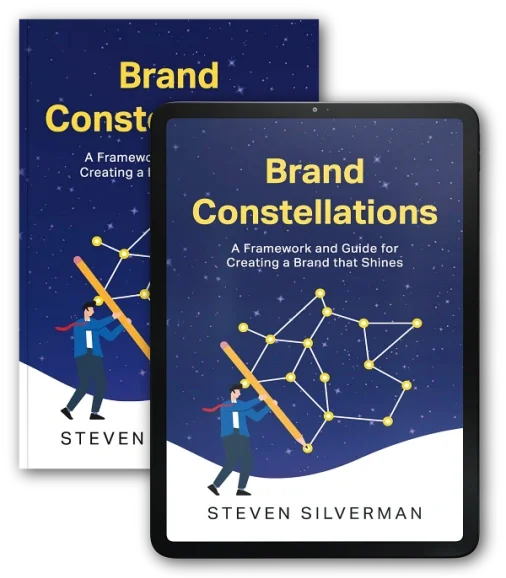
If Customers Are Confused, Your Brand Isn’t Broken—It’s Misaligned
When brand growth slows, marketing campaigns fall flat, or customer loyalty fades, it's easy to assume something fundamental is broken.
But most brands aren’t broken.
They’re misaligned.
Misalignment: The Root Cause of Customer Confusion
Brand misalignment occurs when product promises, pricing, and marketing contradict each other.
This drift fractures the customer experience.
And, confused customers don’t pause to figure you out—they simply move on.
The solution isn’t louder marketing.
It’s strategic alignment.
At Brand Constellations LLC, we use the Brand Constellations Framework to align eight brand dimensions: Product, Placement, Price, Promotion, Category, Competitors, Company, Customers.
When these dimensions form align to form a consistent Brand Constellation, they create Brand Clarity: the gravitational force that attracts understanding, trust, and choice.
Why Alignment Drives Brand Clarity
Research supports this: clear and consistent brand signals reduce perceived risk, enhance trust, and drive purchase behavior.
Meanwhile, fragmented branding leads to confusion, customer hesitation, and lost opportunity.
Alignment creates Clarity.
Clarity builds Trust.
Trust drives Choice.
Choice drives Growth.
Brand Constellations in Action: Analysis Across Eight Dimensions
Let’s see how three strong brands create alignment—and Brand Clarity—across all eight dimensions.
🔥 Patagonia
- Product: Sustainable outdoor apparel and gear.
→ Product durability and eco-conscious design reinforce brand purpose. - Placement: Specialty retailers, brand-owned stores, and direct-to-consumer channels emphasizing values-based shopping.
- Price: Premium pricing reflects quality, ethics, and commitment to sustainability.
- Promotion: Storytelling centered on activism, conservation, and consumer responsibility. Campaigns like “Don’t Buy This Jacket” amplify the mission.
- Category: Redefined outdoor apparel to integrate environmental activism into consumer choice.
- Competitors: Differentiates sharply from competitors by positioning activism—not fashion—as core to the brand.
- Company: Internally aligned around social and environmental responsibility, including donating 1% of sales to environmental causes.
- Customers: Outdoor enthusiasts, activists, and values-driven consumers who want their purchases to reflect their ethics.
âś… Result: Patagonia's brand constellation forms a complete, aligned narrative. Every touchpoint reinforces a singular meaning.
đź’§ Liquid Death
- Product: Canned mountain water.
→ Simple, pure product turned into a lifestyle symbol with edgy branding - Placement: Sold in unconventional outlets (concert venues, skate shops) and major retailers, disrupting traditional bottled water shelves.
- Price: Premium price compared to typical bottled water, positioning water as a “cool” purchase rather than a commodity.
- Promotion: Wild, rebellious marketing campaigns (“Murder Your Thirst”) that parody heavy metal culture.
- Category: Redefines bottled water as a lifestyle product rather than a health necessity.
- Competitors: Differentiates by rejecting the “purity” and “wellness” narratives of traditional water brands like Evian or Smartwater.
- Company: Culture built around humor, rebellion, and subverting expectations. Employees are encouraged to "embrace weirdness."
- Customers: Young, edgy, health-conscious consumers who want healthier options without sacrificing personal style.
✅ Result: Liquid Death’s constellation is sharply defined. Its clarity fuels viral growth and deep brand loyalty.
đź‘“ Warby Parker
- Product: Stylish eyeglasses offered at a fraction of traditional retail prices.
- Placement: Online-first, with select physical stores in high-traffic urban centers.
- Price: Transparent, affordable pricing—around $95 per pair—undercutting traditional optical retail.
- Promotion: Friendly, accessible messaging emphasizing simplicity, affordability, and giving back.
- Category: Created a new direct-to-consumer category for designer eyewear.
- Competitors: Differentiates from luxury optical brands (e.g., Luxottica) and discount providers by offering both style and affordability.
- Company: Internally mission-driven, with initiatives like the "Buy a Pair, Give a Pair" program for global vision care.
- Customers: Millennials and Gen Z professionals seeking affordable, stylish, socially responsible choices.
✅ Result: Warby Parker’s brand constellation aligns pricing, purpose, and product into a brand that customers immediately understand and trust.
When Alignment Breaks, Brands Drift
The opposite is also true.
- WeWork’s collapse was fueled by brand drift: from "community-first startup spaces" to "real estate empire" to "wellness lifestyle brand," it confused both customers and investors.
- Tropicana’s infamous 2009 packaging change stripped away critical brand signals (the orange with a straw), creating customer confusion and a 20% sales drop.
When the brand constellation drifts out of focus, even strong brands suffer quickly.
Align to Create Clarity in Your Brand
If customers are confused, your brand isn’t broken—it’s misaligned.
To create lasting Brand Clarity:
- Align your Product with your Promise.
- Align your Price with your Positioning.
- Align your Promotion with your Purpose.
- Align your Placement with your Customer's habits.
- Clarify your Category, Company Values, and Competitive Differentiation.
The Brand Constellations Framework makes this visible, actionable, and fixable.
Because when your constellation aligns, your brand shines.
And when your brand shines clearly, customers don’t hesitate—they choose.
#branding #brandstrategy #brandclarity #brandconstellations #marketingstrategy #brandalignment #b2bmarketing #growthstrategy



